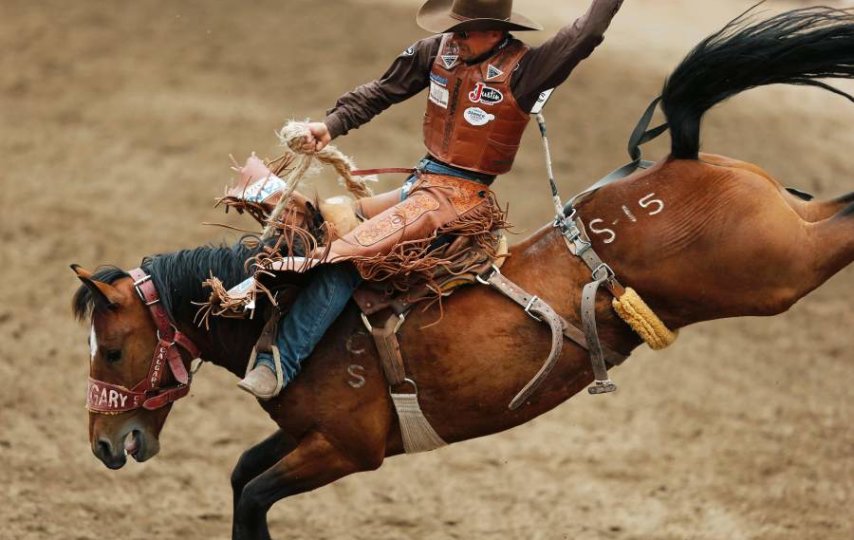Horse riding is a sport considered extreme and the dangers that can occur in approaching the horse are often underestimated. Not only is it a 500kg animal that can kill a person with a kick. Falls from a horse can be fatal. Horse riding is a discipline in which it is essential to approach the animal with respect, always having fear of it.
Horse accidents are much more common than you might think and there are not only falls. The horse is an unpredictable animal. He is easily frightened and can react in different ways and some horses are more dangerous than others.
Habits of dangerous horses
The horse is an animal that by its size and dangerous behavior can kill a person. Knowledge of the animal preserves people from many risks and knowledge of its language helps prevent the worst. In fact, like many other animals, the horse sends certain signals before attacking or before making an impropriety. Some specimens can be even more dangerous for several factors:
- Horse character
- mistreatment
- traumas
- Incorrect or too rich diet
- Lack of knowledge about a horse like horse names
Common horse accidents
There are countless accidents that can occur when approaching the horse:
Falls from horse
Horse falls are very common for those who practice this sport. One of the first rules taught in riding schools is that a good rider learns to fall off a horse.
Falls can occur in various circumstances, some related to the incorrectness of the animal:
- the saddle that is not tightened well
- the refusal of the horse that hangs perhaps in front of an obstacle
- the discarding of the horse
- the bucking
- the horse gets scared
In some cases it can be accidents that are not voluntary, in other cases, it could be a vice or an incorrectness of the animal that will have to be recovered.
The football of the horse
The horse kicks. Everybody knows it too. One of the first rules is to always keep a safe distance from the animal. The horse kicks with its hind legs and also manages to kick sideways. It does this with millimeter precision thanks to its binocular view.
There are several circumstances in which he can do it: out of the vice, out of fear, to ward off danger, a nuisance, a pain, or when he is ironed. Approaching the horse must take place in complete safety, calmly, and respecting the animal’s language.
The horse bites
Many horses have the habit of biting. The horse is not aggressive in nature. However, there are specimens that have developed aggression even going to charge people and bite them violently. It is necessary to understand the reasons for this behavior which can be traced back to trauma, mistreatment, dominance, territoriality, or the protection of the foal by a mare.
As a rule, a horse about to attack sends explicit signals: it lowers its ears backward. A clear sign of the animal’s nervousness.
For example, some horses do not like to be touched in some parts of the body or they bite because they do not like to feel the saddle girth tightened. It is important to always observe the animal and catch its signals.
Factors that make the horse dangerous
There are several factors that make the horse dangerous and under different circumstances.
- fear
- herd isolation
- discomfort
- an environment that causes nuisance
It is important to remember that the horse by nature is prey for which his instinct is organized for escape in the face of events that frighten him or that are potentially dangerous. To the wrong behavior of man, the horse will react accordingly.
What to do
In all circumstances, it is essential to reassure the animal, leading it to accept a given situation. The inappropriate reaction can worsen the horse’s behavior, increasing stress, and leading him to become dangerous, taking certain attitudes.
- avoid increasing the risk in certain dangerous situations: never move abruptly, behind the horse that does not see the person, raise your voice, hitting the horse or tug it on the mouth.
- when the horse shows signs of nervousness or fear in the face of a danger (ears forward, open froges, tense muscles, backward movements, discard) anticipate the behavior of the animal without further frightening it.
- stay focused on the animal trying to contain and mitigate its reactions
- maintain safety in all circumstances from the ground or in the saddle
- during the approach the horse feels people’s negative emotions (fear, anger, anxiety) and this leads to an increase in heart rate
- the horse is like a mirror: keep calm during the approach or management of the animal in the saddle to instill safety in the animal
- body language is also fundamental, so it is advisable to control your movements
When we got the required behavior we reward the horse. The best way is to do it with a scratch that recalls grooming, a behavior that reassures and calms the animal. It is a friendly gesture that horses use among themselves.
This will strengthen the sense of the pack, restoring harmony in the hierarchy. The important thing is to gain the horse’s trust, in the role of leadership without dominating but showing the horse to understand its language.
Prevention
Prevention is essential to avoid serious consequences. It is essential to preserve the safety of the rider and horse. Being afraid of the horse is a wake-up call that helps prevent any danger. Being an animal, there is always an unpredictability factor so you never have to take the horse underfoot and approach the animal with too much safety.
Knowledge of the horse
The horse has a language in which it communicates with the herd. It is a social animal that lives within a group in which there is a specific hierarchy. Being a prey, the horse is always on alert through its visual, olfactory and auditory senses, ready to pick up any danger signal that is movement, noise or sound or smell. The knowledge of the horse’s language, its nature, its character helps to prevent the animal’s reactions.
From an ethological point of view, it is possible to understand the animal. He can become nervous after a long period of inactivity, imprisoned in the box or for too rich a diet. Horses who work too hard may instead refuse to get out of the box and become aggressive.
Horses that have not been tamed well in contact with people may not respect the human.
Learn to handle the horse
Depending on the disciplines that are in riding or outside in the countryside or cross country riding there are dangers and factors that must be prevented. First of all it is necessary to learn the approach with the horse and its management from the ground. Subsequently, it is essential to learn how to ride a horse for riding and handling the animal in different circumstances.
Beware of children who approach the horse
- always ask for the owner’s consent
- do not enter the box if you don’t know the horse
- avoid abrupt movements
- contain the tone of voice, avoiding laughing or shouting
- talk to the horse in a calm and peaceful way
- do not approach the horse from behind
- always keep the safety distances
- avoid feeding the horse with your hands
- always use safety accessories such as the approved helmet













